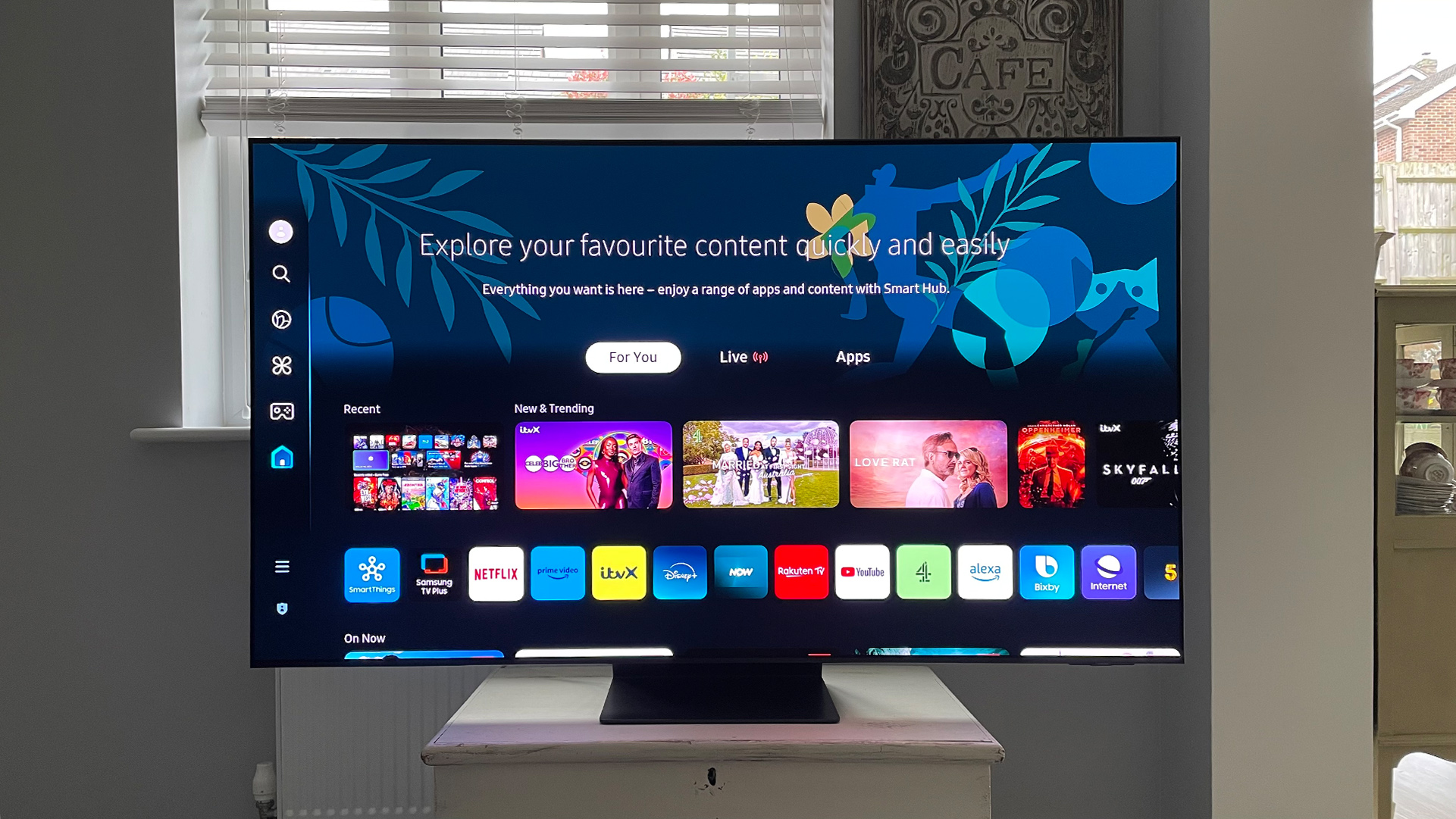Samsung's confirmed 8K, QD-OLED and big-screen sets will be its primary focus for TVs
Samsung seems content to let TCL and Hisense fight for the affordable TV market

Samsung confirms it will focus on QD-OLED, Neo QLED and extra large TVs after competition from Hisense and TCL delivers new challenges in the budget sector.
As part of the brand's first quarterly earnings report for 2024, Samsung revealed an insight into how its many different divisions are doing; covering everything from automotive to computer storage and (the one we're most interested in) The Virtual Display Business, which is home to its TV department. So how has Samsung's TV branch performed this year thus far?
From what we gather it's a bit of a mixed bag, which is to be expected when we take into account the current economic and geopolitical climate worldwide. The good news is that Samsung's quarterly profitability is up despite the decline in market interest, which it attributes to a greater focus on premium TV products. It names OLED, Neo QLED (Samsung's term for Mini LED), and extra large TVs sized 75 inches and upwards as the products that are driving this successful upkeep in quarterly revenue.
Samsung's focus on premium sets including 8K and QD-OLED seems to have paid off here, however, taking a wider look at the market year-on-year isn't quite as positive. Samsung reports that profitability has declined, citing stagnant TV market demand and an increase in manufacturing costs amid intensifying market competition. While we can't say for certain, we presume that Samsung is feeling the pressure from its Chinese competitors in this regard, as the likes of Hisense and TCL are consistently sneaking up in the market rankings.
Future predictions have also been made, and currently it's looking like it could go one of two ways. Samsung fears that market demand will remain weak due to a lack of demand in emerging markets, however, a sporting event-filled Summer (Paris Olympic Games, UEFA European Football Championship and Wimbledon) might be the saving grace for Samsung in the second quarter of 2024. Samsung's Visual Display Business intends to focus on "securing profitability, enhancing sales of strategic products and strengthening operations management in each business segment" in order to minimise the impact of this potentially weak demand.
Furthermore, the second half of 2024 is expected to be more profitable thanks to an anticipated resurgence in market demand, albeit a gradual one. Samsung's strategy seems to cover addressing diverse consumer needs alongside promoting its position in "AI Screen Leadership". It will continue to offer differentiated consumer experiences via connected devices (smartphones and smart home accessories) and drive market growth by promoting security and sustainability. The final weapon in Samsung's arsenal is Samsung TV Plus, which it will continue to grow amidst competition.
You can read the full Samsung first quarter 2024 results report here.
The latest hi-fi, home cinema and tech news, reviews, buying advice and deals, direct to your inbox.
MORE:
Read our full Samsung S95D OLED TV review
And find the full Samsung 2024 TV lineup here
As well as the best Samsung TVs
Lewis Empson is a Senior Staff Writer on What Hi-Fi?. He was previously Gaming and Digital editor for Cardiff University's 'Quench Magazine', Lewis graduated in 2021 and has since worked on a selection of lifestyle magazines and regional newspapers. Outside of work, he enjoys gaming, gigs and regular cinema trips.
